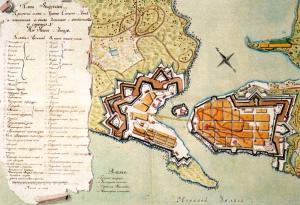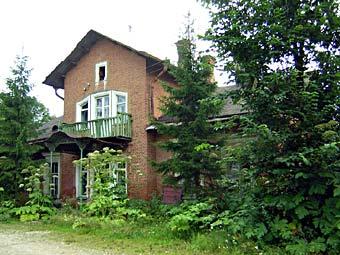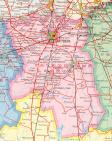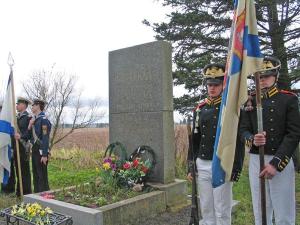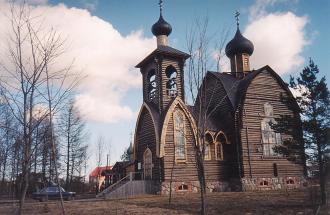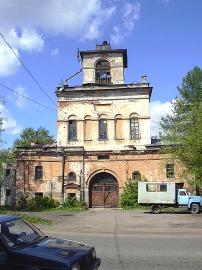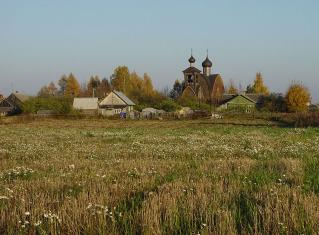|
hidden
|
Annensky fortifications (Vyborg Town)
Annensky fortifications (Vyborg Town) (They are located in the town of Vyborg between Petrovskaya embankment and Batalyonnaya street).The system of the defensive military constructions is located in the south-east part of Tverdysh Island. The... more
|
|
|
|
hidden
|
Cemeteries
Cemeteries. The history of cemeteries on the modern Leningrad Oblast territory has not studied practically yet. The reiterated devastation these lands during the wars led to the destruction of many graves and tombstones.... more
|
|
|
|
hidden
|
Country estates
Country estates. In the early 20th century on the territory of the modern Leningrad Oblast there were 2000 country estates. Mainly they appeared at one time with St. Petersburg. There were not many "Family nests" that belonged to one family and... more
|
|
|
|
hidden
|
Gatchina District
GATCHINA DISTRICT, municipal entity. Population: 111,600. Area: 2850.3 sq. km. Established in 1927. Due to renaming of Gatchina Town, it was called Trotsk District in 1927-29, and Krasnogvardeisk District in 1929-44.Gatchina district borders with... more
|
|
|
|
hidden
|
Hannibal, Abram (Ibragim) Petrovich (1697 - 1781), an architect, military figure
Abram (Ibragim) Petrovich Hannibal (1697-1781, Suida of the Sofia uezd of At. Petersburg Gubernia), a military engineer. According to one information he was born in Cameroon, according to another data he was born in Eritrea (Ethiopia) and was a son... more
|
|
|
|
hidden
|
Kobrino, a country estate
Kobrino, a country estate (the village of Kobrino, the Gatchina district). In the early 18th century the waste of Koprina belonged to Count P.M. Apraksin. Since 1762 A.P. Gannibal became the owner of Kobrino, he built a small country estate of... more
|
|
|
|
hidden
|
Kobrino, village
KOBRINO, a village in Gatchina District. Population: 96. Located at the Kobrinka River (tributary of the Suyda.) 0.5 km away from K. is Pribytkovo railway station of the Gatchina-Luga branch. The name originates from the name of the Kobrin family.... more
|
|
|
|
hidden
|
Pushkin, Aleksandr Sergeyevich (1799-1837), a poet
Pushkin, Aleksandr Sergeyevich (1799-1837), a poet, prosaist, playwright, journalist, historian. Representatives of the Pushkins family Novgorodian branch lived in the Vod lands from the end of the 15th century till the beginning of the 17th... more
|
|
|
|
hidden
|
"Suida", a museum-estate
"Suida", a museum-estate (the Gatchina district, Suida Village, 4 Central Street). Between the 12th and 15th centuries the Suida pogost was an administrative and territorial centres of the Koporye uyezd of the Vod pyatina. Peter I granted the... more
|
|
|
|
hidden
|
Suyda River, the
SUYDA (Suydinka), a river in Gatchina District. Length: 63 km. Catchment area: 475 sq. km. Flow rate: 3.1 cu. m/s. Its source is in a marsh north-west of Tikhkovitsi village. It is a karst river. It flows among fields and meadows, with its banks... more
|
|
|
|
hidden
|
Taitsi, a country estate
Taitsi, a country estate (the urban settlement of Taitsi, the Gatchina district). In 1712 Peter I granted the estate to Admiral I.M. Golovin. His sons divided the inheritance in two parts, in 1767 they sold Maliye Taitsi to A.P. Gannibal and in... more
|
|
|
|
hidden
|
The Church of the Resurrection of Christ (Voskresenskoye Village, Gatchina District)
The Church of the Resurrection of Christ (Voskresenskoye Village, 1 Tsentralnaya Street). In an estate of Count P.M. Apraksin the first wooden church was built in 1718. From 1759 the grange of Suida was owned by A.P. Hannibal, a necropolis had... more
|
|
|
|
hidden
|
Tikhvin Convent of the Presentation in the Temple
The Tikhvin Convent of the Presentation in the Temple (the town of Tikhvin). It was founded on the right bank of the Tikhvinka River, probably like the Dormition Convent, according to the order of Ivan the Terrible in 1560. The wooden walls were... more
|
|
|
|
hidden
|
Voskresenskoye, village
VOSKRESENSKOYE, a village in Gatchina District. Population: 170. It is located east of Suyda railway station of the St. Petersburg-Gatchina-Luga branch. Historically, the village was also called Suyda, while the toponym Voskresenskoye appeared in... more
|
|
|



